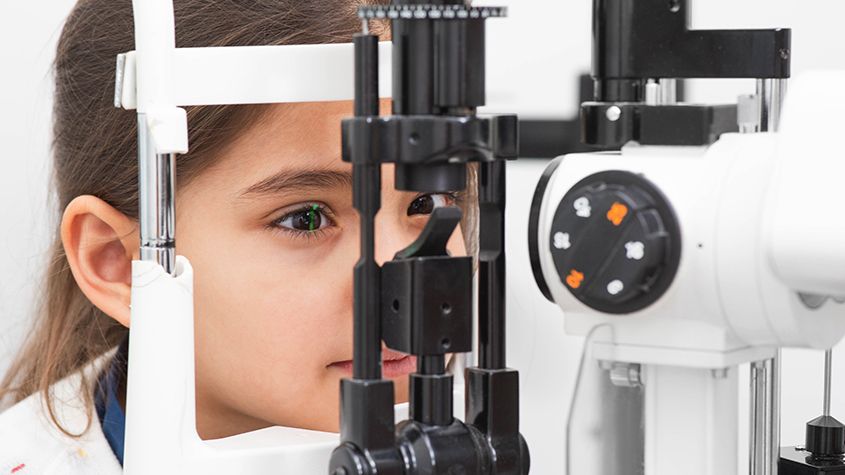Children's Eye Exams

Visit this site http://isee.nei.nih.gov/ to find fun learning activities and games you and your children can take part in. Learning about your eyes is just the first step in a lifetime of great eye health and better vision.
What is Children's Vision?
Children's Vision 1-3-5 reminds parents when their young children need to have an eye examination from their optometrist: BEFORE AGE 1, at AGE 3, and at AGE 5 before entering first grade. The earlier a child's vision problems are detected, the more responsive the visual system will be to treatment and you will be ensuring your child has the best possible vision skills to learn. Dr. Kim performs eye exams on children ages 4 and up. Please see your pediatrician for recommendations for children ages 4 and younger.
The exam before age 1
The American Optometric Association recommends that a child should have their first eye examination by an optometrist at six months of age. Why? Because your optometrist will examine the eyes for disease and normal eye structure development. Infants will be checked for possible signs of amblyopia (lazy eye), crossed-eyes, and other focusing problems. Early detection is often critical in preventing vision problems that can have lifelong effects.
The exam at age 3
At age 3, your child's visual acuity and eye health will be assessed. Eye movement skills, focusing, and binocular vision skills (the ability of the two eyes to work together as a team) will be evaluated. The eyes will again be checked for warning signs of amblyopia, which is most responsive to treatment if diagnosed by the age of 3.
The Exam At Age 5
At age 5, your child should be examined to determine the readiness of vision skills for school. An estimated 10% of children have a significant need for eyeglasses to treat nearsightedness, farsightedness, or astigmatism. Approximately 15-20% suffer from poor vision skills-focusing, eye alignment, or other eye movement skills. Sending a child to school with undetected vision problems can lead to difficulty with learning and frustration in school.
Do children's school vision screening substitute for a comprehensive vision examination by an optometrist? No. The purpose of a school vision screening is to detect gross visual problems to determine if there is an immediate need for a comprehensive vision examination. All children should have regular comprehensive visual exams. Good vision is more than just 20/20 sight. Efficient vision requires a number of critical visual skills. some of these skills are eye teaming, clear and sustained near vision, tracking, focusing, and accurate eye-hand coordination. Recognizing the shortcomings of vision screenings, the National PTA passed a resolution to educate its members, school personnel, and the public at large about learning-related visual problems and recommend expanded school vision screening to identify more at-risk kids.
Frequency of child vision exams The American Optometric Association and California Optometric Association recommend the following guidelines for the frequency of child vision exams:
- Age 6 months
- Age 3 years
- Before entering first grade ·
- Every two years thereafter
Your optometrist will recommend appropriate schedules for high-risk kids.
Our Optometrist is trained in the latest technology and techniques to provide a thorough examination of your child even if the child has yet to develop communication skills, cooperates poorly during the exam, or is unable to attend to an eye chart. Your primary care optometrist is proud to be able to help children achieve their best in life.








